Korea Monocle
KOREA
Destination next
South Korea’s international exposure may seem like a recent development but the East Asian nation has been openly exchanging ideas and influence with the US and Europe for more than a century. A responsible actor on the global stage, as well as a cultural powerhouse, the country is home to fresh thinking on everything from architecture to food and fashion. Nowhere mixes tradition and modernity quite like South Korea.

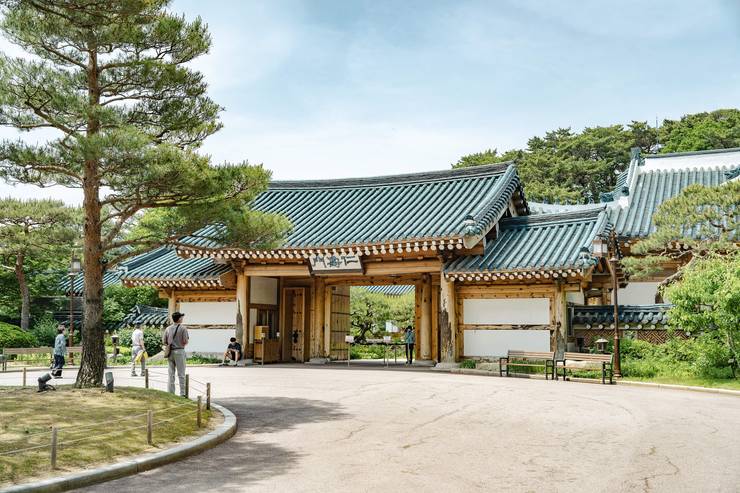
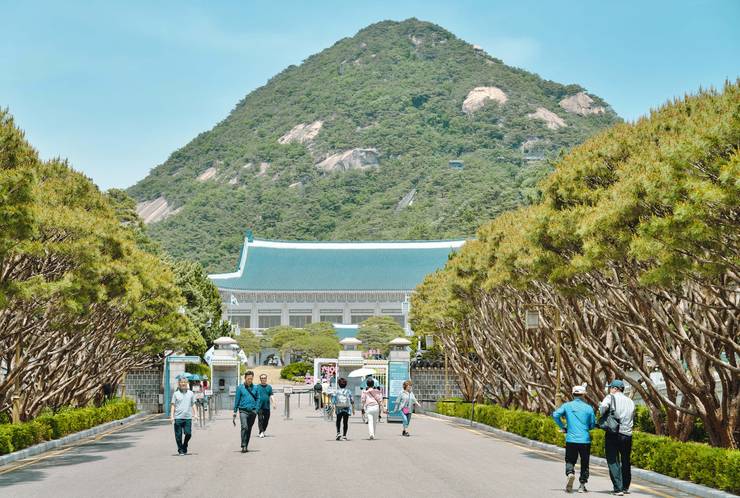
In the spirit of accessibility, Cheong Wa Dae, the former official residence and office of the president of South Korea, was opened to the public in 2022 for the first time in its 74-year history. Commonly known as the “Blue House” because of its distinctive roof tiles, Cheong Wa Dae is now a public park. Visitors can walk along trails where leaders once took their morning strolls or watch an outdoor concert staged on the former helipad.
01 Both sides now
On the 140th anniversary of British-Korean relations, the country’s ambassador to the UK shares his unique perspective on its successes, partnerships and cultural output.
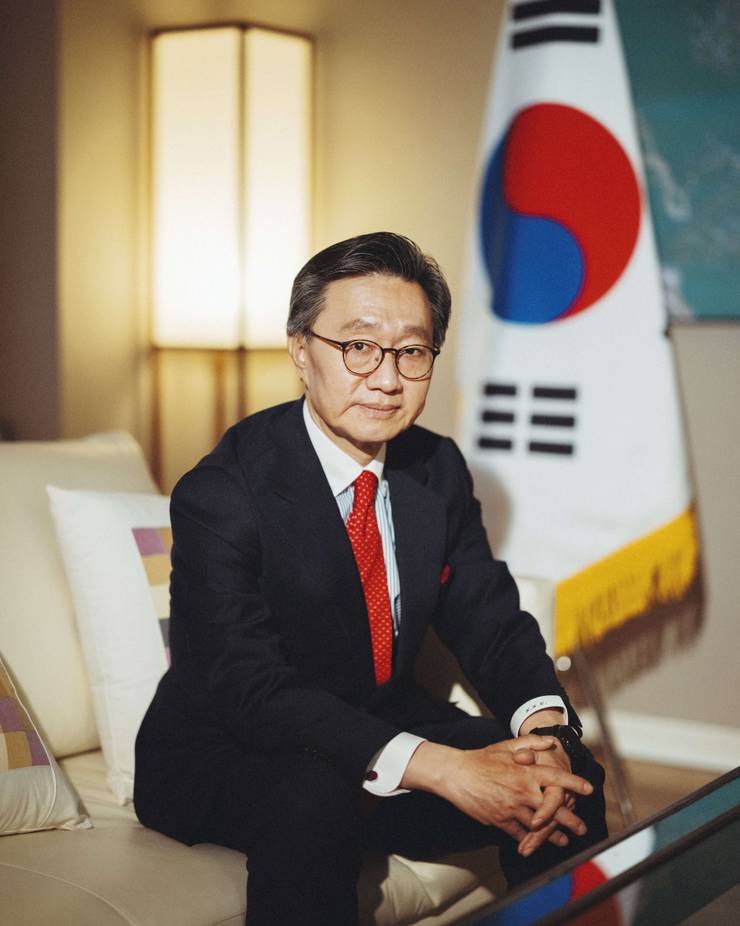
Yoon Yeocheol
Korean ambassador to the UK
Having worked at the United Nations and the Korean Embassy in Washington before taking up his recent post in London, ambassador Yoon Yeocheol has a wide perspective on his country’s place on the global stage – and how it has evolved in recent decades. As he celebrates the milestone in British-Korean relations, he reflects on what his country has to offer to the world.
How would you describe South Korea to someone who has never visited the country before?
It is a country that is proud of thousands of years of history but, in terms of modern history, it’s one of the young republics that was born after the Second World War. We did a good job in catching up in some areas: South Korea is the 10th largest economy in the world. There’s a culture of haste is in our genes but we have turned this into very good ground for adapting to new technologies.
What can the world learn from South Korea?
We have had our own trials and errors but somehow we were very lucky. We had no resources, no money, but our growth has been very successful, thanks to a combination of good elements and circumstance.
We have a very strong culture of putting emphasis on education. Also we adopted the right kind of policy, putting whatever resources we had into growth-prone areas. We sometimes say that South Korea is the only country that has been an aid recipient and has now become a donor.
We feel that we are in a position to contribute to the world, not only to share the experience of our development to the those in the developing world but also by joining the advanced world in the common work of protecting the earth against climate change.
We’d also like to contribute to the promotion of freedom, peace and prosperity in the world, upholding and protecting the universal values and norms that have benefitted us so much along the path of our development – and that we share as the source of our stability.
What is behind the creative spirit that underpins so much of Korea’s world famous cultural output?
In a way, Korea can be regarded as a conservative society, holding on to tradition. But Koreans are also people who are very daring: we are unafraid of trying something new. If you face failures, it doesn’t matter; we do it anyway.
This spirit provides a very good grounding for business start-ups, innovation and making new discoveries. It is also apparent when it comes to culture. Koreans can be very strong and unreserved; when we hit it right, a very good piece of art or music can come from it. So that energy and unbridled attitude can really work to our advantage.
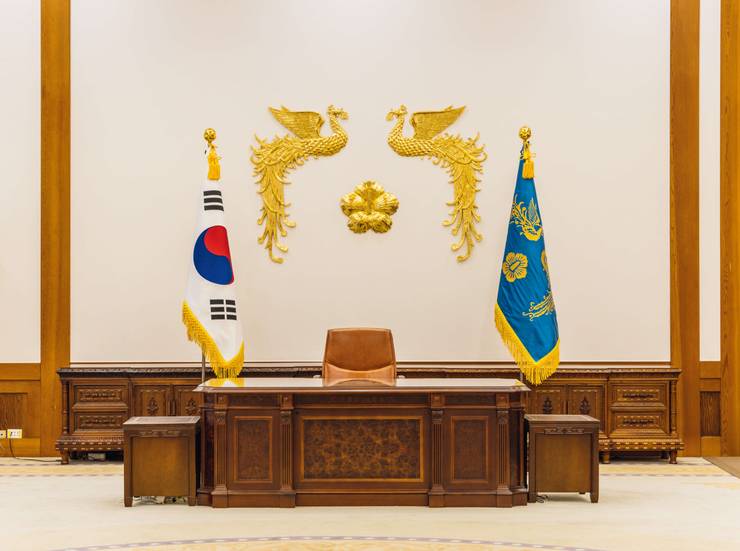
02 Designs on a city
A wealth of creative agencies, architectural practices and ambitious urban landscaping projects are seeing South Korea lead the way in building modern, liveable cities.
Architecture
Z-Lab
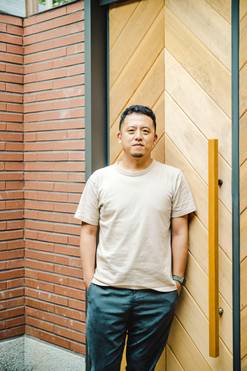
Contemporary Korean architecture is defined by its commitment to blending the country’s rich architectural heritage with modern techniques and design. Z-Lab exemplifies this philosophy. Founded by university classmates Noh Kyung Rok, Park Jung Hyun and Lee Sang Muk in 2014, the studio’s projects include beautifully restored hanoks (traditional houses) and purpose-built spas that connect with their natural surroundings. The concept of “locality”, a focus on designing structures that complement both architectural heritage and the surrounding environment, is central to Z-Lab’s work. Janwol is one such project, an award-winning village house on Jeju island. Before constructing the house, the architects mapped out all the trees on the property to ensure that the build wouldn’t disrupt existing natural boundaries; part of the roof even has a cut-out to accommodate a branch. “We call it Korean modern,” says Noh of Z-Lab’s architectural style. “It’s a little bit of tradition and some modern style.”
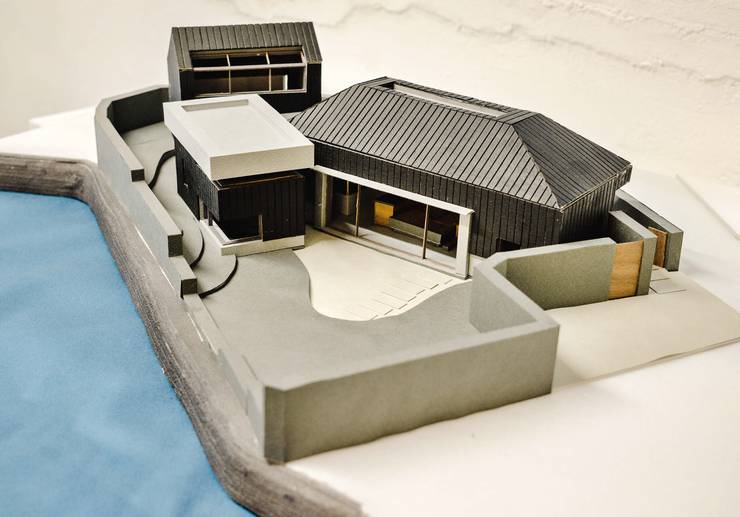
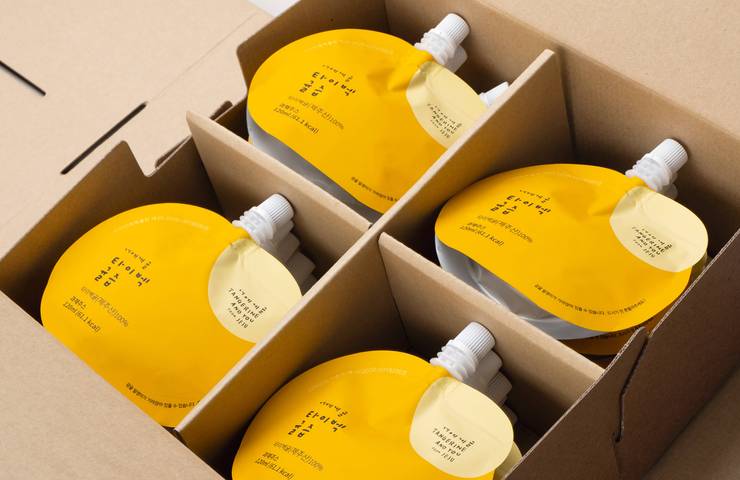
Graphic design Aurg Design
The Korean alphabet (hangul), with its straight lines and geometric shapes, is a designer’s dream. Gifted these building blocks by a visionary 15th-century king, South Korea’s contemporary design talent, including agencies such as Studio FNT, Studio LeM and Boinda, have turned the country into a world-leading hub for branding and graphic design. Aurg Design is another at the forefront of this new generation. The Seoul-based studio takes on a range of brand identity and character design projects, be it a pet shop, a tea-maker or a tangerine farm in Jeju.
“The goal is not just to design an image but to create a new perspective,” says Jintaek Park, who founded Aurg with his wife, Songyee Paek, in 2017.
Wary of “trend-oriented” design, the pair prefer a simple yet effective approach that captures “the essence of a brand”.
Talent to discover
Boinda
Experiments with colour and calligraphy for fresh graphics that adorn printed materials.
Doojin Hwang Architects
Reimagined hanok residences and experimental modern design.
Jeoh Architects
Launched the construction firm Framework to source quality building materials.
Mass Studies
Designed Seoul’s Songwon Art Center and Jeju’s Osulloc Tea House pavilion.
One O One Architects
A cultured portfolio ranging from art galleries in Paju to residences in Gwangju.
Studio FNT
Playful, simple branding for art fairs, film festivals and traditional culture centres.
Studio LeM
Launched in 2020 and already a go-to studio for sharp branding and design.
Three urban renewal sites to explore
Yeorlin Songhyeon
After more than a century, a 37,000sq m plot of land in Songhyeon-dong opened to the public last autumn. It was formerly bounded by high walls on all four sides but the barriers have come down and the land has been transformed into a “green square”. Later this year it will host part of the Seoul Biennale of Architecture and Urbanism, while an art museum will open in 2027.
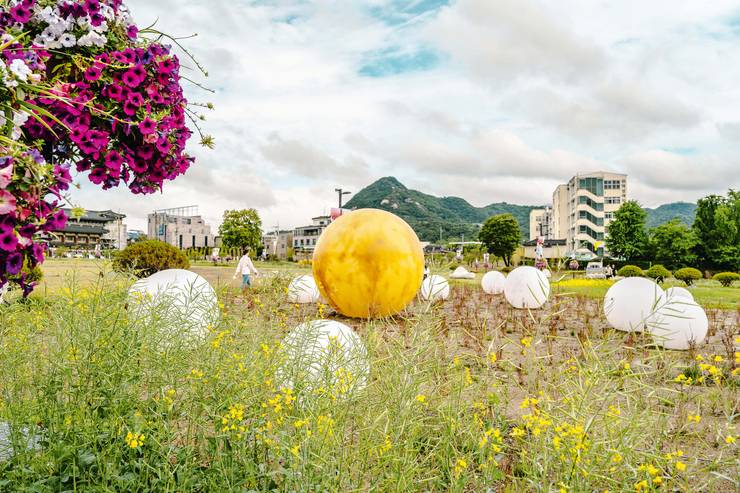
Dongbu Changko
In 2019 a former tobacco plant and warehouse in Cheongju reopened as an arts-and-culture hub. It now serves as the main venue for the Cheongju Biennale and houses the local branch of the National Museum of Modern and Contemporary Art. Multipurpose studios, music practice rooms and a programme of workshops and events have made Dongbu Changko a focal point for the city’s artists, performers and artisans to gather, learn and practise their craft.
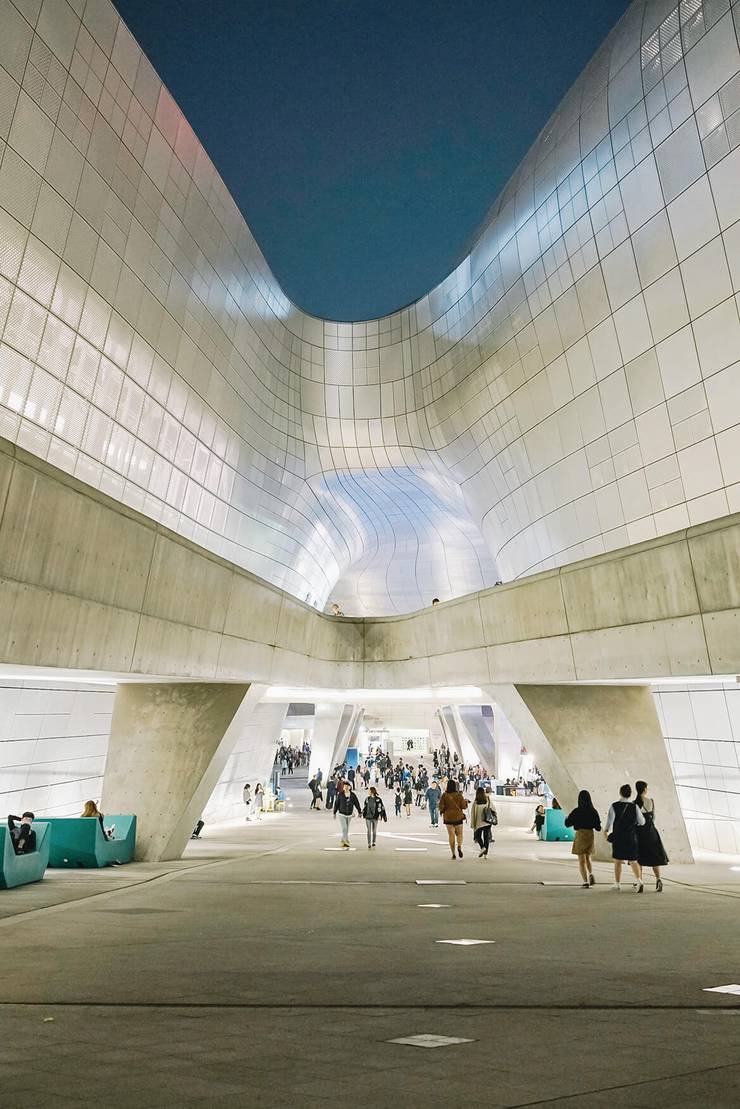
Dongdaemun Design Plaza
Opened in 2014 and one of British architect Zaha Hadid’s last completed projects, Seoul’s Dongdaemun Design Plaza is a landmark example of successful urban renewal. The former sports stadium was rebuilt as a multi-use space for retail, restaurants and cultural events, from fashion shows to concerts. Visitors can roam the grassy rooftop or explore the swooping curves of the futuristic structure.
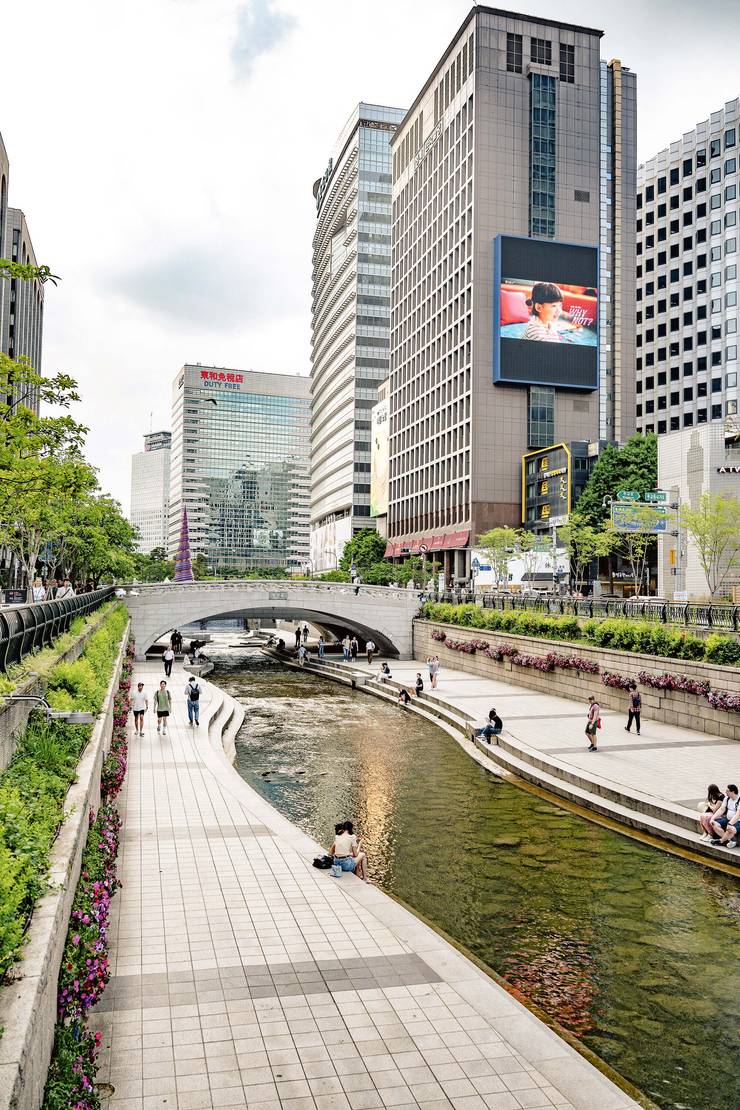
South Korea’s cities have been transformed this century by ambitious urban landscaping projects that prioritise pedestrians and elevate quality of life. Since the 2005 opening of Seoul’s Cheonggyecheon, a public park built around a 10km stream found under an expressway, urban centres across the country have doubled down on renewal as residents reap the benefits through revitalised neighbourhoods, new parks and public spaces.

South Korea’s buzzy art scene is attracting eyeballs like never before. World-class art events such as Frieze Seoul and Gwangju Biennale connect international collectors with emerging artists, while blue-chip galleries showcase modern masters overseas. Kukje Gallery (pictured) has been championing Korean contemporary artists for more than 40 years from its Seoul flagship. A new gallery is due to open this year inside a restored hanok (traditional house).
03 Shared cultures
While the world dances to catchy K-pop tunes and wells up watching K-dramas, there are many other cultural exports that are quietly taking the world by storm.

Fashion
Neithers
By combining high-quality garments with an eclectic style and rapidly changing domestic trends, South Korean labels have become some of the most coveted in the fashion industry.
“Independent brands have grown a lot here in the last decade,” says Dukhyun Won (pictured above), who founded the iconic labels Neithers and Blankof as well as the Seoul shop Slow Steady Club.
The young founders of other brands, such as Le17Septembre and LVIR, are expanding their international reach while making all of their clothing at home in Korea.
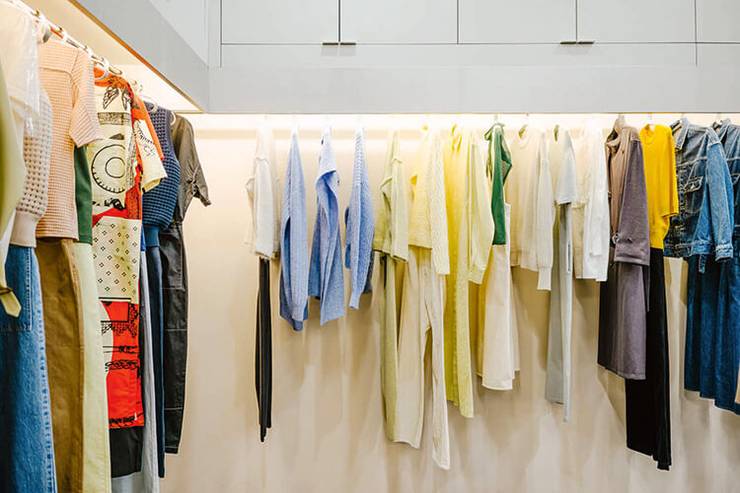
Examples of Hallyu around the world
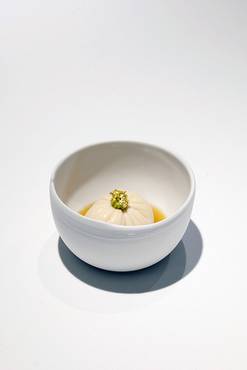
K-cuisine
Korean cuisine has been on the boil for some time and now it seems the world is ready to tuck in. Kimchi and gochujang are staple ingredients in the pantries of many non-Korean home chefs while fine-dining restaurants, such as Mingles and Mosu, are expanding their footprint abroad. Mosu chef-founder Sung Anh has been inspired and energised by the explosion of interest in Korean food and culture over the last five years. “It’s such a big deal for me to witness that.” he says. “It’s exciting to be a part of.”
Mosu opened in Seoul in 2017. Anh’s creative menu features dishes such as abalone yuba taco and acorn noodles with truffle. Hitting the spot with diners, Mosu’s success at home has given overseas fans an appetite for more. Anh opened a second restaurant in Hong Kong last year, following in the footsteps of peers such as Mingoo Kang of Mingles fame. “I like to talk to other chefs who are trying to push the boundaries of Korean culture,” he says. “There’s so much potential here.”
K-literature
A summer reading list would be remiss without some new Korean titles in the mix. Award-winning writer Han Kang is making a splash in the Anglophone literary world with a new translation of her novel Greek Lessons, a profound and intimate story about losing language and connecting with other people. Literary giant Hwang Sok Yong’s much-anticipated new book Mater 2–10 is a multigenerational epic that spreads across a century of Korean history. Seoul native Bora Chung’s short story collection Cursed Bunny and Cheon Myeong-kwan’s raucous English-language debut Whale, which have both been shortlisted for the International Booker Prize, are not to be missed either.
K-language
Students of all ages are signing up for Korean lessons at a rapid (or ppaleun) rate, making the language one of the fastest-growing in the world. Nowhere is this more true than in southeast Asia, where several countries are integrating Korean into their school curriculums.
Beyond borders
Go beyond the skyscrapers of Seoul’s glitzy Gangnam district and you will find an entirely different side to South Korea. Busan is home to chic city beaches while Yang Yang’s surf culture is riding a more laid-back wave. Jeju is a home favourite – the volcanic island getaway has it all, from quiet coastal roads and stunning forest hikes around Halla mountain to a budding art scene and unique stone architecture.
Three places to visit
Jeju
Mountain trails and seaside saunas make this one of Korea’s most popular tourist destinations. Cultural homestays and wellness retreats are attracting a younger generation in search of a relaxed pace of life.
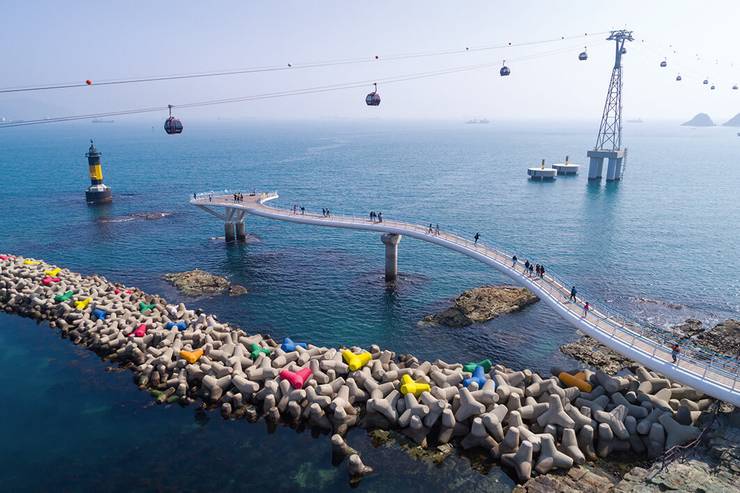
Busan
Korea’s second city boasts a dramatic skyline of high-rise towers soaring above white-sand beaches. The 14th-century Haedong Yonggung Temple, perched on a rocky outcrop, is a must-see.
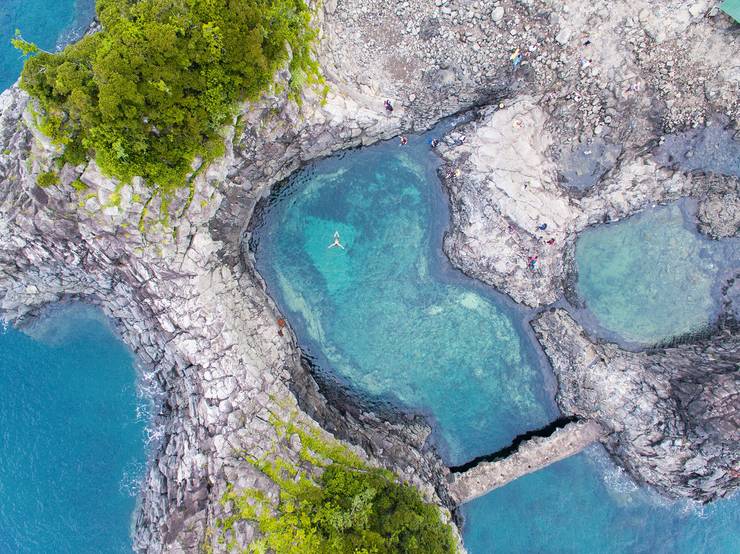
Yang Yang
This coastal province is one of Korea’s best-kept secrets with pristine beaches, temples and nature trails. Watersports abound and Yang Yang’s beachside cafés and restaurants are the perfect place to kick back after a day out on the water.


